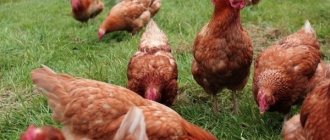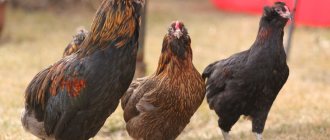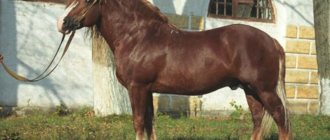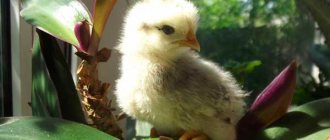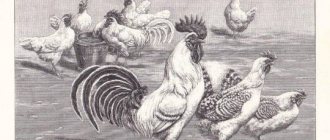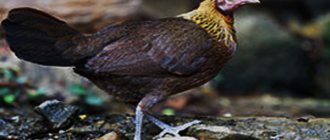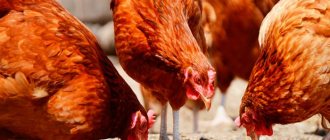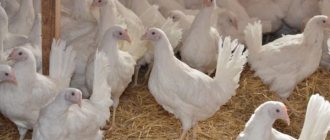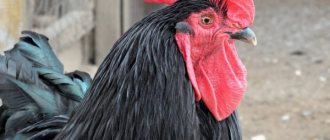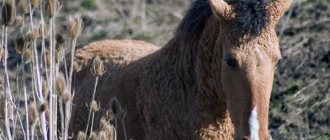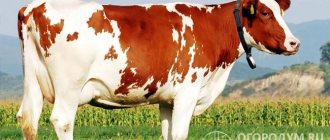Pedigree Welsumer chickens are the result of breeding experiments at the beginning of the last century. In their experiments, scientists achieved the appearance of large birds that would lay tasty eggs with a dense dark-red shell. The experiments had positive results. The new variety very soon became popular in Europe and other countries. From this article you will learn all about the characteristics of Welsumer chickens, their advantages, disadvantages and principles of keeping them on a farm.
History of origin
The chicken breed got its name from the village of Velzum, near which the experiments were carried out.
Since 1900, scientists from the Netherlands have been working on developing the Welsumer chicken breed. The genetic materials of partridge-colored chickens were used as the basis. In particular, Cochins, Wyandots, Dorkings, Barnevelders, as well as fighting cocks and mongrel chickens.
The process was completed in 1910. And by 1930, Welsumer chickens had spread to Great Britain, where they were added to the British Standard list for their characteristics.
The description of the Welsumer chicken breed indicates its main advantages. This is a productive meat and egg variety, which inherited from its ancestors the ability to lay large eggs with a dense shell.
From fighting cocks, chickens inherited good physical characteristics and the ability to survive in adverse conditions.
Appearance of the bird
Seeing Welsumer for the first time, few poultry owners will think that a famous Scottish representative is standing in front of them. The color of these birds is not much different from domestic mongrel chickens. However, experienced experts say there are a number of traits that only Welzumer is endowed with:
- Color. Roosters have a black belly, wings and tail. As for the back and neck, these parts of the body have a bright fiery color. The Welsumer chicken is striped with a black pattern on its back. But the chest and neck area have a rich red color;
- Body type. Both chickens and roosters have large bodies;
- The head is small in size in both sexes.
And the last distinguishing feature of the breed is its plumage. Under the dense layer of feathers there is a large amount of fluff. Due to this, Velzumer is able to withstand even extremely low temperatures.
general characteristics
Exterior, color
The body of chickens of this breed is voluminous, the back is wide. The wings fit tightly to the body. The belly is large and round. The tail is located at an obtuse angle. The head is graceful. The rooster's comb is medium-sized and leaf-shaped. The beak is yellow. The eyes are red-orange. The paws are low and yellow.
The color of the roosters is motley and varied. The neck and back of the individuals are reddish-red, the belly, tail and wings have black plumage with a metallic tint. The feathers of the black bird are reddish-brown, darkening towards the lower part of the body. The chest and neck are rufous.
The down and feathers of Welsumer chickens are warm and fluffy. Therefore, birds winter well and are resistant to hypothermia.
It is impossible to distinguish birds of the Welsumer breed from outbred individuals only by color. The genetic makeup of the cross includes outbred chickens whose plumage is similar to the Welsumer.
Chickens
Welsumer chickens have yellow and brown-red fluff. They grow quickly. At one and a half months the chick reaches a weight of up to 800 g.
At this age, the difference between hens and cockerels is almost invisible. The hens are colored slightly darker than the cockerels, and their eyes are framed with dark eyeliner. Later, birds develop distinct sexual characteristics: comb, beard and plumage color.
Roosters are characterized by a stately gait, which distinguishes purebred birds from outbred ones.
Disadvantages and vices
When determining the quality of chickens of this breed, they pay attention to the shortcomings of the individual’s exterior. Among them:
- insufficiently rounded body shapes;
- flat belly of a laying hen;
- too inclined body;
- disproportionately large head;
- drooping wings;
- lack of a characteristic pattern, excessive variegation of plumage;
- eye color, far from orange-red;
- white lobe;
- the presence of a pattern in the form of spots or stripes;
- the presence of white plumage in the rooster and rich black plumage in the chicken.
If these characteristics are present, there is inbreeding between different breeds of chickens and deviation from the standards.
Character traits
Despite the fact that the Welsumer chickens have fighting rooster genes in their pedigree, their disposition towards humans is friendly and docile. The exceptions are individuals in adolescence and birds kept in unfavorable conditions: crowded conditions, with a lack of hens per rooster.
Welsumer chickens quickly get used to their owner and are willing to be handled. They are not shy, not restless and easily adapt to new conditions.
Detailed description
Price
Due to the fact that the Welsumer breed is in demand, buying it is not a problem. Most subsidiary farms and poultry farms are ready to offer hens, roosters, chicks and hatching eggs for sale at an affordable price.
An adult hen can be bought for 1000 rubles, a rooster for 500 rubles, and chickens for 300-500 rubles, depending on age. The cost of a hatching egg is from 100 rubles and above.
Appearance
The plumage is mostly brown, the neck is golden. Graceful head with a large red crest. The face and earrings are also red. Eye color is orange.
The chest is massive and convex. Low legs with well-developed muscles.
Roosters are brighter than females. There are 3 color options.
The most common is the red partridge. There is black plumage on the chest. The tail is black, with a green tint.
Silver and golden are the most common among dwarf breeds.
- In the first case, the roosters are white with a black belly and tail, and the hen has white feathers only on the neck, the rest of the color is dark.
- In the second case, the hen has a golden body, and the neck is much lighter; the roosters have variegated and heterogeneous colors: the head is white, the tail is black, the front part of the body is white and black, but the back is red and white.
Character
The birds are quite calm, despite the presence of the fighting breed in the pedigree. Roosters have inherited importance and seriousness from their ancestors, and are sometimes pugnacious. Limited space or an insufficient number of females contribute to the manifestation of aggression.
Laying hens have a curious disposition and are not at all shy. They communicate well with other inhabitants of the farmstead and easily become tame.
Hatching instinct
Birds have a calm disposition
The main disadvantage of this breed is the poorly developed maternal instinct in females. It is very difficult to place a Welsumer hen in a nest to hatch chicks.
Usually the offspring are bred using other people's laying hens or in an incubator.
Welsumer productivity indicators
Welsumer chickens enter reproductive age at 5-6 months. Their eggs have a regular oval shape, and their weight reaches 65 g. The color is brown, the shell is uniform and dense.
The taste of eggs is determined by the diet of laying hens. But even with a meager diet, the taste remains at a high level.
The breed's egg production rate in the first year of life is 170 eggs per year. Afterwards it decreases to 150-120 eggs per year from one hen. Egg-laying activity in chickens occurs in the spring and summer months.
As for meat productivity, the live weight of a rooster is 2.5-2.8 kg, a kilo less than that of a chicken. If these indicators are lower, the birds develop with a delay.
The reason for poor weight gain and low egg production is poor housing conditions and a poorly balanced diet.
Pros of the breed
One of the main advantages of Welsumer birds is their resistance to hypothermia. Birds are not afraid of the cold, since their layer of down and feathers is denser than that of most other domestic chickens.
In addition to physical endurance, chickens of this breed are characterized by year-round egg production, unpretentiousness in food, and rapid growth and development.
Other benefits include:
- high levels of egg and meat production when fed with mixed feed;
- safety of young animals up to 96%;
- high rates of fertilizing clutch (90-93%).
In addition, birds are active and independent from an early age. Therefore, raising chickens will not bring any special worries.
Reviews
Valentina
My sister brought a dozen “Velzumer” chickens; the chicks are active, quickly gain weight, and are unpretentious. The birds have excellent immunity, they didn’t get sick, and the entire flock was vaccinated at the age of six months. The chickens are good layers, the eggs are of an unusual dark color, and are highly valued on the market. Egg production rates are average, but the eggs are large. The quality of the meat is also excellent, although two-year-old chickens are a little tough.
Stanislav
I brought the hatching eggs from afar, but they are worth it. The birds are calm, they make contact, their granddaughter has taken a fancy to them, and they are happy to receive attention. They lay well, I keep them with other breeds, no problems or conflicts have arisen. I don’t buy compound feed; I feed it with grain, vegetables, and herbs. Occasionally I give boiled fish and cottage cheese.
About the disadvantages of Welsumers
Welsumer chickens are characterized by a weak maternal instinct. They are not inclined to hatch eggs, as they are very restless. Therefore, an incubator is often used to breed birds, which entails additional costs.
As for roosters, aggressive ones are often found among young ones. This is due to the fact that fighting varieties are present in the genetic makeup of the breed.
In order to neutralize the aggression of roosters, it is enough not to cramp them with space and provide each with a separate flock of females: from 7 to 12 individuals.
Do black whales make good brood hens?
Despite the fact that the breed in question appeared more than a century ago, these chickens are not endowed with the brooding instinct. The reason is that over a long period of selection work to improve characteristics, this species has completely lost its natural maternal instinct. However, in return the chickens received the following qualities:
- good performance indicator;
- endurance;
- persistent immunity.
Of course, the lack of instinct is a big drawback of the breed in question. However, you can solve the problem by purchasing a mini incubator, with which you can breed the breed. Moreover, reviews from experienced farmers say the percentage of mirage eggs in one set does not exceed 5%.
Chicken coop equipment
Microclimate installation
Chickens do not like drafts and high humidity. Under such conditions, a pathogenic fungus forms on the walls and floor of the chicken coop. These factors are the causes of spore poisoning and the occurrence of colds. To exclude them, the aviary is equipped with walls on all sides and the doors are not left open when birds are there.
It is important to maintain a positive temperature indoors and regulate the humidity level (65-80%). To do this, the chicken coop is equipped with a ventilation system and is ventilated daily. Comfortable temperature is ensured due to the tightness of walls and doors. If necessary, additional insulation is carried out using building materials: mineral wool, polystyrene foam.
Bird dispersal
The optimal ratio of individuals inside the chicken coop: 3-4 birds per square meter.
The room is divided into several compartments. Roosters and hens are resettled. Laying hens need peace and quiet, while roosters are active and sometimes aggressive.
Nests for laying hens are required.
The floor of the chicken coop and nest are lined with straw, which is changed as it gets dirty.
The presence of perches is a prerequisite for keeping chickens. Birds need them for sleep. Wooden perches with a diameter of 10 cm, which you can buy at a farm store or make yourself, are suitable for this.
Perches are placed under the wall at a height of 1 meter from the floor. Their length and number must correspond to the number of birds (30 cm for one individual).
Maintaining laying hen productivity
To create favorable conditions, the chicken coop is equipped with a lighting system. Newborn chicks need a lighting brightness of 30 lux to 40 lux. After the third week, a light bulb of 7 lux is enough for them. As for laying hens, lighting with a brightness of 10 lux is suitable for them.
In winter, lighting plays an important role in the incubation process. Daylight hours are decreasing, so laying hens need additional lighting.
To avoid stress in chickens, it is recommended to gradually increase the length of daylight hours. First, the backlight is turned on for a maximum of half an hour, after which the duration of the backlight increases to 14 hours a day. Fluorescent lamps or “housekeeper” lamps are used as lighting.
As for heating, it is important to maintain a positive temperature in the chicken coop. This promotes good egg production and prevents hypothermia.
Maintenance and care
Thanks to their unpretentiousness, Welsumers can make do with basic amenities - food, food and a roof over their heads. Nevertheless, there are still some requirements for the conditions of their detention.
Chicken coop requirements
When planning a chicken coop for Welzumer chickens, you need to calculate the space using the formula 1 m² for 3-4 chickens. The chicken coop requires good lighting as it promotes the fertility of the hens. There should be no dampness in the room and good ventilation is necessary - otherwise the animals will get sick. The floor is covered with peat or sawdust.
There are no special requirements for temperature, since chickens are resistant to cold and can even winter in a chicken coop without heating. It is advisable to equip the chicken coop with perches, nests and perches to increase comfort. Another essential condition is cleaning the chicken coop to maintain cleanliness.
Did you know? In Germany, a breed of dwarf Welmuser was bred, inferior to its “full-size” relatives only in size.
Yard for walks
Since Welzumer is a breed that requires walking, chickens need to have a yard for walking, and in the absence of one, an aviary.
We recommend reading: Ant is an insect. Description, features, types, lifestyle and habitat of the ant. The article will tell you in detail about ants, their species, lifestyle and habitat.
The floor is covered with hay - this will prevent paws from freezing in winter. There should also be no dampness in the yard. At temperatures below 10 degrees below zero, chicken walks should last no longer than 90 minutes.
Feeders, drinkers, zone baths
The most common feeders and drinkers are suitable for Welzumer chickens. It is better to place them in such a way that they are not exposed to direct sunlight or to a minimum. Another important element is the presence of areas filled with sand or ash in which the hens can take baths.
Molting and break in egg production
Like other chickens, Welsumer is characterized by seasonal molting. It occurs in the fall and lasts from 4 to 8 weeks. This period is accompanied by a break in egg production.
Planned herd replacement
After 3 years, Welzumer chickens' productivity begins to decline. Coupled with good health, rapid maturation and high endurance, chickens at this age are slaughtered, replenishing the flock by raising chickens. Thus, the herd is replaced every 3 years.
Bird walking mode
In winter, at temperatures down to -10, pets need a walk. This increases the egg production of chickens and preserves immunity. Walking time is about one hour. Birds are walked only in the absence of wind and heavy rainfall.
In spring, summer and warm autumn, the poultry house openings are opened early in the morning and closed only in the evening.
The walking area is provided with a bedding of sawdust, peat or hay to prevent the birds' paws from getting too cold. In addition, during the process of replacing it, droppings and other dirt are easily removed. The litter is changed as it gets dirty and wet.
Historical reference
The breed owes its name to a Dutch village called Velsum. The genetic material of the Malayan chicken, a fighting animal, was introduced into local indigenous chickens in 1900 to increase the weight of the chickens and thus increase the amount of meat obtained during their slaughter.
Did you know? Breeders also crossed the new breed with native chickens - this made it possible to further increase their egg productivity.
A little later, genetic material from Dorking chickens was added to help the chickens produce more eggs. The chickens were then inoculated with genetic material from breeds such as Rhode Island and Barnevelder.
Welsumer nutrition
Diet for adults
To obtain high productivity of chickens, their diet must be balanced. Otherwise, the pets’ immunity decreases, they develop poorly, do not gain weight, and do not lay an insufficient number of eggs.
If Welsumers are raised for meat and eggs, their diet must contain all the necessary nutrients. In summer, pets are fed mixed feed and mash 2 times a day.
The third meal is compensated by grazing. This includes grass and the small insects that live in it. In winter, when there is no natural food, three meals a day with wet mash is recommended. Laying hens are fed four times a day.
The nutritional mix includes boiled cereals, bone meal, boiled vegetables, vitamin and mineral supplements. Ready-made feed is also recommended. Small pebbles are added to this mixture (ratio 1:10).
The mash is served fresh. It is important that the chickens eat it within the first half hour after serving. In winter, the mash is served warm. Feeders are filled two-thirds full. This way the birds will not splash or trample the food.
Menu for kids
The diet of chickens differs from the menu of adults. In the first days after hatching, they are fed with crushed boiled eggs, millet and cottage cheese. After 10 days, oatmeal, corn, wheat, and fresh herbs are introduced into the diet.
During this period, babies are fed 5 to 6 times a day. After 10 days, the number of feedings is reduced to 4 times. From the age of 30 days, young animals are fed 3 times a day with mash for adults.
Breeding
Welsumer chickens will not produce caring mothers; of course, you can try to place the bird in the nest, but this will not end in success. Therefore, eggs are placed either under hens of other breeds or placed in an incubator. You can also purchase already grown chickens from breeders.
Eggs are carefully selected from healthy laying hens with high productivity rates. The shape of the eggs should be standard; it is advisable to take medium-sized eggs; too small and large ones will not work. The hatchability of chicks in the incubator is high, approximately 92%.
Care and feeding of chicks
After birth, the chicks are placed in boxes or crates with high sides, where they live until they are two months old, after which they are transferred to an adult flock. At first, the temperature in the box should be at least thirty degrees; as feathers appear, it is gradually reduced. Cleanliness and balanced feeding are the key to the health of the chicks. Also, kids need to be taught a routine: in the morning the lights are turned on at 6:00 and turned off at 21:00. The young animals are fed every 3 hours, and from the age of ten days they switch to 4-5 feedings a day.
For the first day, the food for the chicks is a crushed, hard-boiled egg mixed with semolina. Already from the third day, greens are introduced, it replenishes the lack of vitamins in the body and promotes the functioning of the digestive system. Fermented milk products should also be present in the diet: kefir, whey, cottage cheese. From day 10, eggs are gradually eliminated, fish and meat and bone meal are gradually introduced.
Important!
Chicks should have 24/7 access to clean, warm water.
Keeping chickens
The chicken coop should be spacious; if it is crowded, the chickens’ egg production decreases. The poultry house must have a window through which light and fresh air will flow. It is necessary to carefully monitor the cleanliness of the room and the level of air humidity. Mold develops in a damp room and can provoke the development of diseases. The bedding is placed on the floor in a layer of approximately 50 cm; it will retain heat in the room.
Perches and nests are located at a height of 50-70 cm; the nests should have clean and soft bedding made of hay, straw or sawdust. Lighting is also important, especially in winter, when the days become short and chickens spend most of their time in the poultry house. The “Beelzemur” family usually consists of one cockerel and 7-10 hens; if there are more females, the fertility of eggs will decrease. Purebred birds need daily walking; many farmers equip a walking yard for this purpose, which is fenced with a net. In summer, chickens spend almost all their time outside. In winter, hay or straw is laid on the ground so that the birds do not get frostbite on their paws. Even in cold weather they are allowed out for walking.
Feeding an adult herd
In winter, chickens are fed three times a day, in summer two. When free-ranging, birds obtain part of their food themselves. In the warm season, mash is given twice a week, in cold weather every day. It is better to steam them with meat or fish broth. “Welsumers” are not picky about food, but the diet should be balanced and rich in vitamins and microelements. Some poultry farmers prefer to feed chickens with mixed feed; it has a balanced composition.
The diet must include:
- crushed cereals;
- greenery;
- protein food;
- minerals;
- vegetables and root vegetables;
Important!
When the outside temperature is below ten degrees below zero, the duration of the walk should be no more than an hour.
Poultry price
Buying chickens of the Welsumer breed is not problematic; they are quite popular. It is better to choose trusted suppliers and reputable poultry farms. Private sellers often turn out to be scammers. The price of eggs ranges from 40-70 rubles, day-old chicks cost from 100 to 150 rubles. Grown up from 180 rubles. Adults cost more than 500-800 rubles.
Breeding Welsumers at home
Incubation
Welsumer chickens have a weak maternal instinct, so breeding them in the traditional way is impossible. This is done using an incubator, the method of placing eggs under a good hen, or purchasing already hatched chicks.
All three methods are highly effective, since the survival rate and birth rate of Welsumers is high.
The optimal temperature in the incubator is 20-22 degrees. For the first 5 days it must be raised to 38 degrees. Eggs are laid in the evening from 17 to 22 hours. This ensures that chicks hatch during the day. Turn the eggs every 3-4 hours.
The incubation period is 21-22 days from the moment of laying. The latest incubator models are equipped with an automated system that regulates the temperature inside and turns the eggs itself.
Lining and purchase
As for the method of placing it on the hen, outbred chickens and individuals of meat breeds are suitable for this: Brahma, Jersey giant, Dorking.
It is better to lay eggs in the spring, when the maternal instinct is especially acute. The permissible number of eggs under one laying hen is 13-15 pieces. Eggs are added to the clutch gradually, which takes 2-3 days. This is done late in the evening when the hen is sleeping.
If you buy chickens, do so from reputable farms. Give preference to Welsumer chicks over 1 month old.
Features of buying Welsumers
Buying Welsumer eggs is beneficial if you have an incubator and a separate room for keeping chicks. Purchasing chickens one to two months old relieves the farmer of the hassle associated with incubation and subsequent fattening of hatched chicks.
You can buy young Welsumer breeds in our country at several farms that specialize in breeding this breed.
As for the cost, a farmer will pay from 60 to 90 rubles for one hatching egg. The cost of one chicken is 270-340 rubles. An adult costs from 800 to 1500 rubles.
Diseases and their prevention
Most of the ailments of Welsumers are provoked due to violation of living conditions and a meager diet. In this case, infectious diseases arise, ailments associated with hypothermia, infection with poisonous mold spores or helminths.
The first time chickens are at risk of getting sick is when they are a few days old, the second time when they are young.
If an infection occurs, not only young welsumers are treated, but also adult chickens.
To avoid epidemics, birds are vaccinated. Preventive measures include timely cleaning of the chicken coop, keeping it clean, feeding chickens only with fresh and high-quality feed, as well as disinfection. It is held once a season.
Advantages and disadvantages
Welsumer chickens are valued by farmers from different countries for their many advantages. These include:
- precocity – puberty in birds occurs earlier than in representatives of other breed lines, at the age of 5 months;
- good indicators of egg productivity;
- unpretentiousness and undemanding conditions of detention;
- good adaptive qualities;
- resistance to various diseases;
- high percentage of safety of chickens and fertilization of eggs;
- beautiful appearance.
Representatives of the Dutch line are not without shortcomings. According to poultry farmers, a significant disadvantage of this variety is the lack of maternal instinct. The cocky disposition of roosters can also be attributed to the negative characteristics of the breed.

